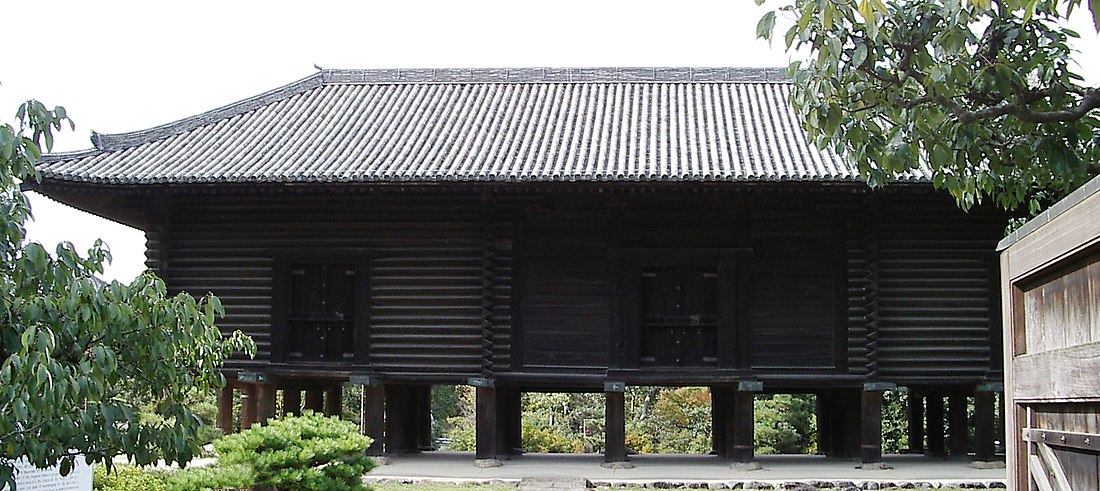Kyōroku (享禄) was a Japanese era name (年号, nengō, "year name") after Daiei and before Tenbun. This era spanned from August 1528 to July 1532.[1] The reigning emperor was Go-Nara-tennō (後奈良天皇).[2]
Change of era
- 1528 Kyōroku gannen (享禄元年): The era name was changed to mark the enthronement of Emperor Go-Nara. The previous era ended and a new one commenced in Daiei 8, the 20th day of the 8th month.
- This nengō takes its name from the I Ching: "He who sits on the Imperial Throne enjoys Heaven's Favor (居天位享天禄).
Events of the Kyōroku era

- 1528 (Kyōroku 1): Fire damaged Yakushi-ji in Nara.[3]
- 1528 (Kyōroku 1): Former kampaku Konoe Tanye became sadaijin. The former naidaijin, Minamoto-no Mitsikoto, becomes the udaijin. Former dainagon Kiusho Tanemitsi becomes naidaijin.[4]
- 1529 (Kyōroku 2): Neo-Confucian scholar Wang Yangming died.[5]
- 1530 (Kyōroku 3, 7th month): The former-kampaku Kiyusho Hisatsune died at the age of 63.[4]
- 1531 (Kyōroku 4): The Kamakura shogunate office of shugo (governor) is abolished.[6]
- 1532 (Kyōroku 5): Followers of the Ikko sect were driven out of Kyoto; and they settled in Osaka.[7]
Notes
References
External links
Wikiwand in your browser!
Seamless Wikipedia browsing. On steroids.
Every time you click a link to Wikipedia, Wiktionary or Wikiquote in your browser's search results, it will show the modern Wikiwand interface.
Wikiwand extension is a five stars, simple, with minimum permission required to keep your browsing private, safe and transparent.
